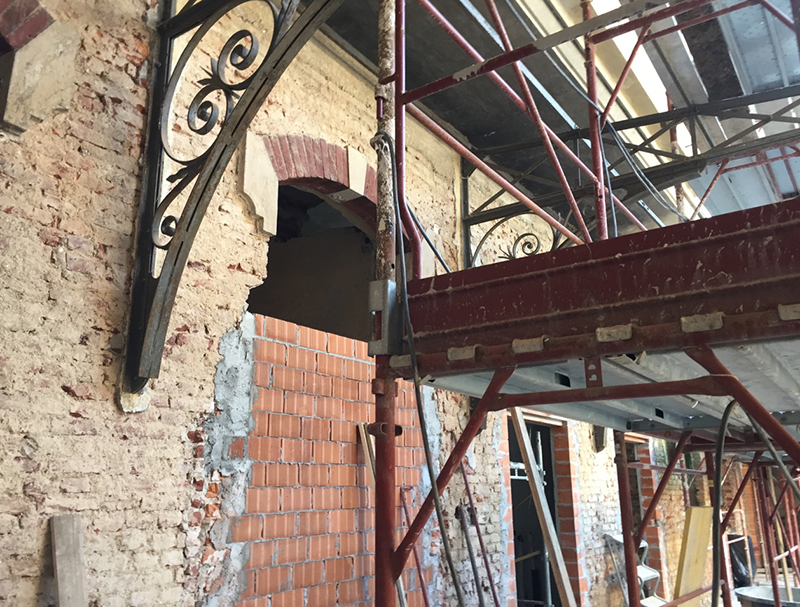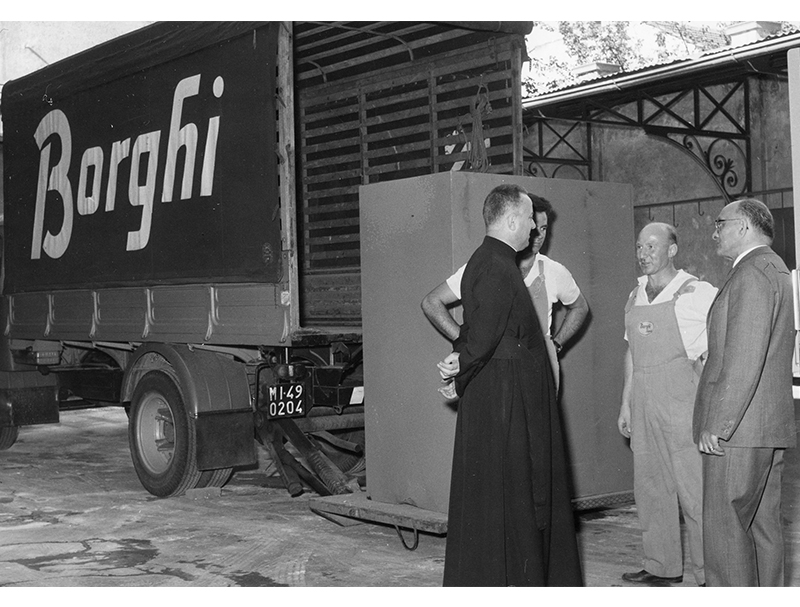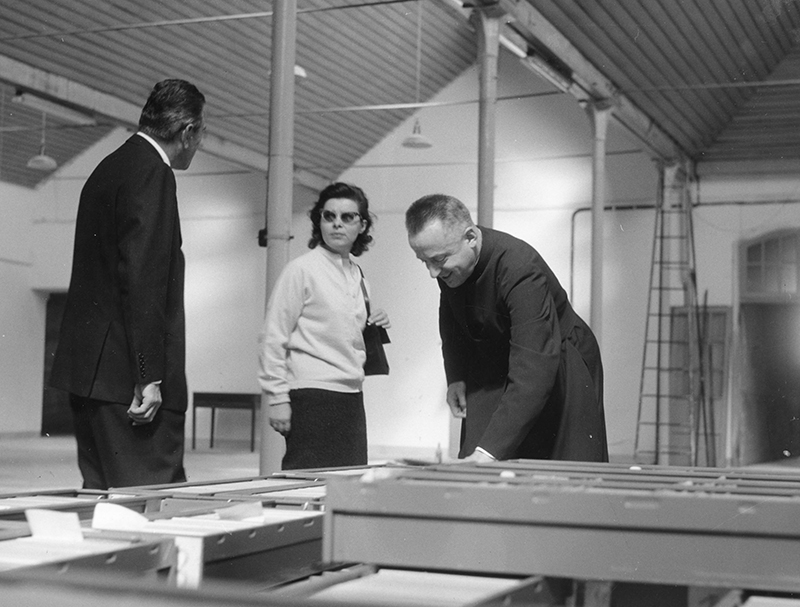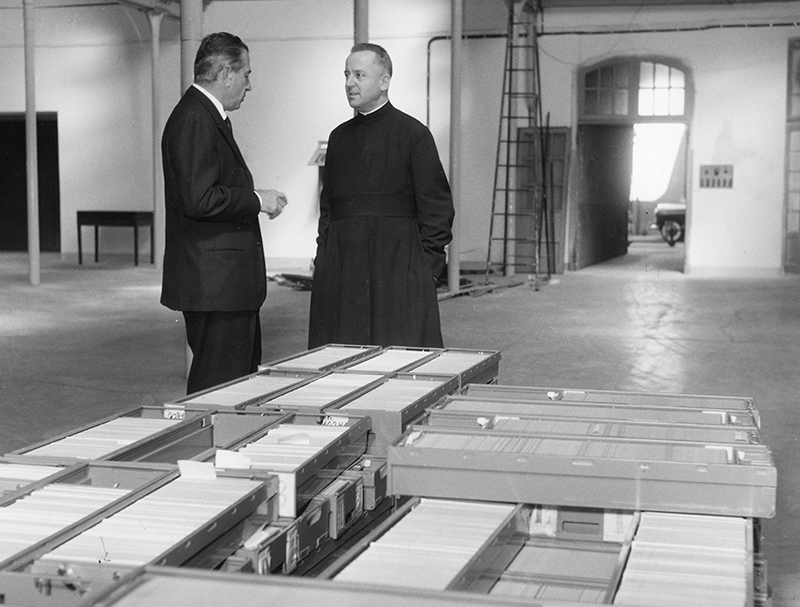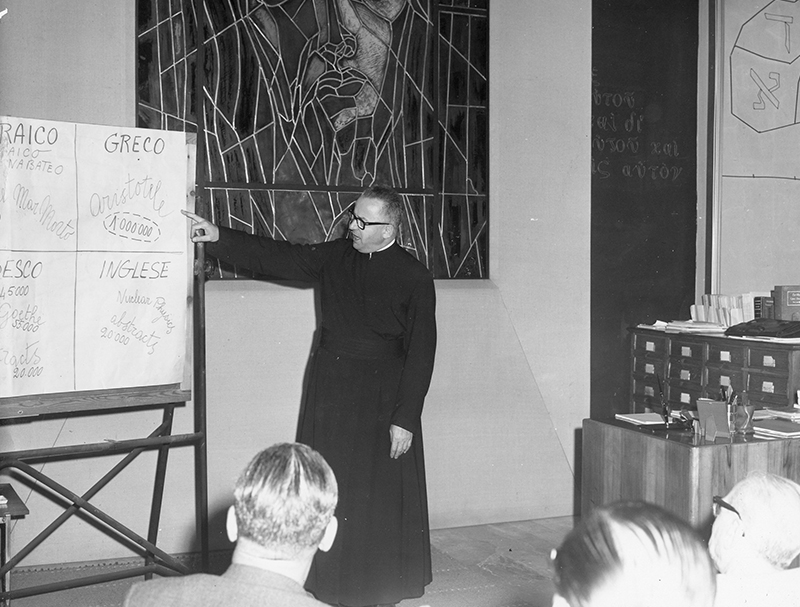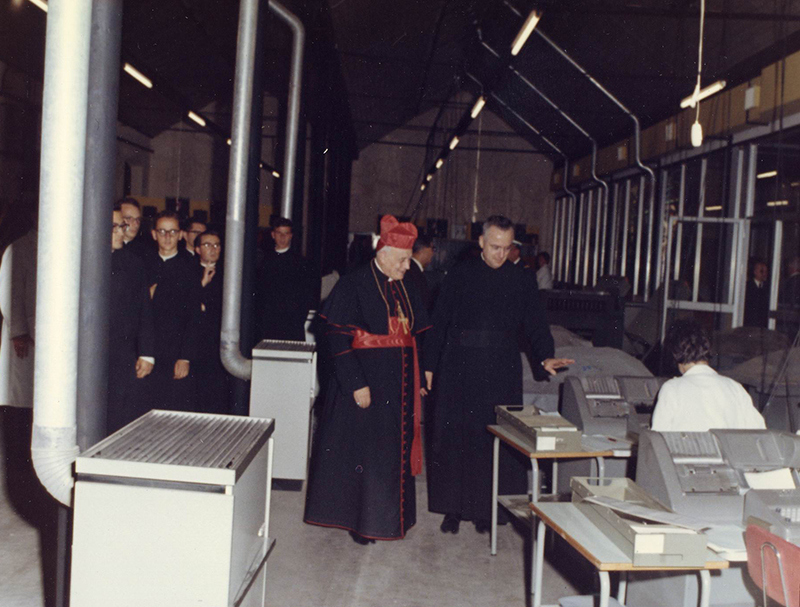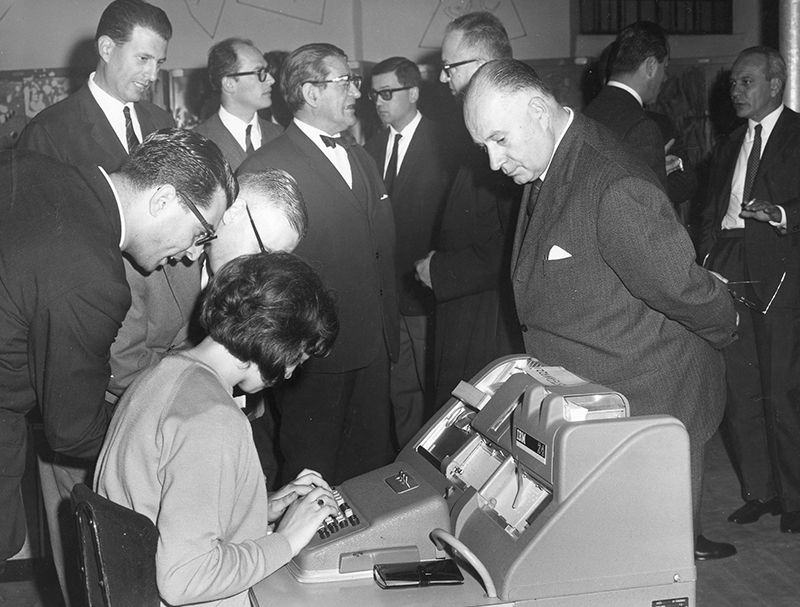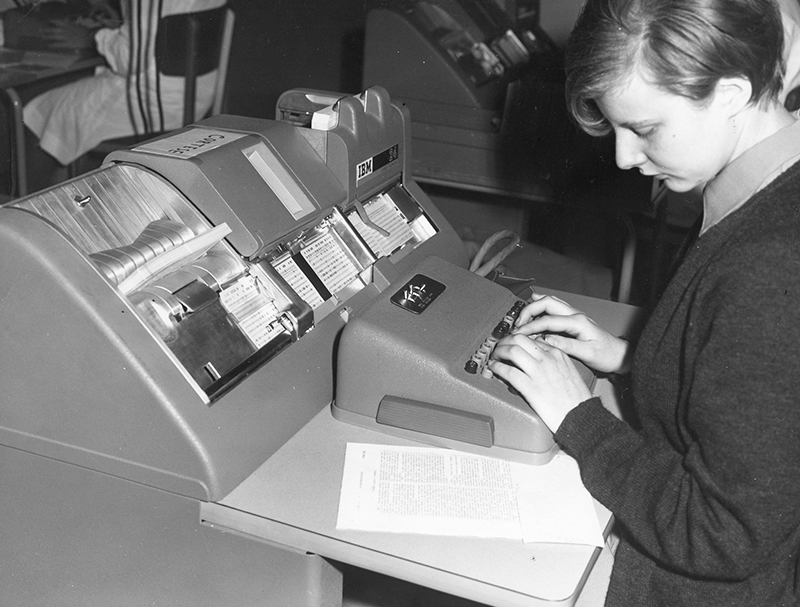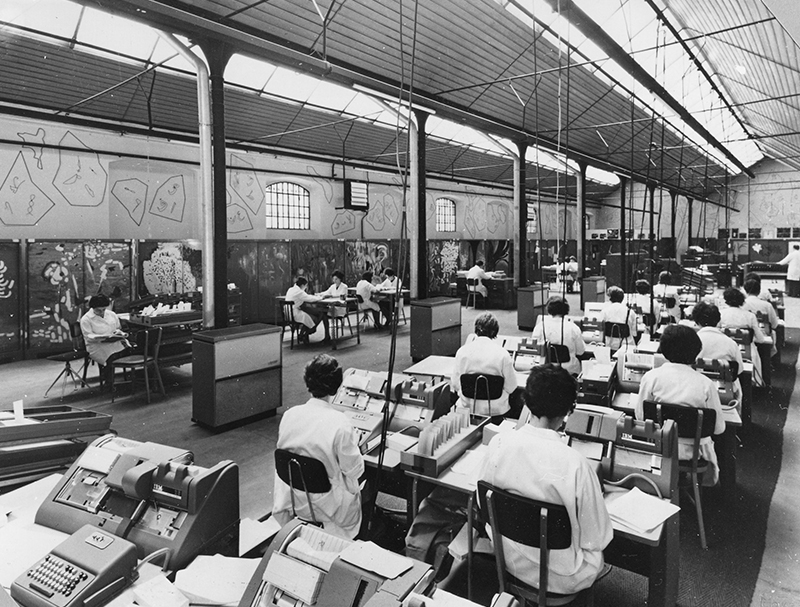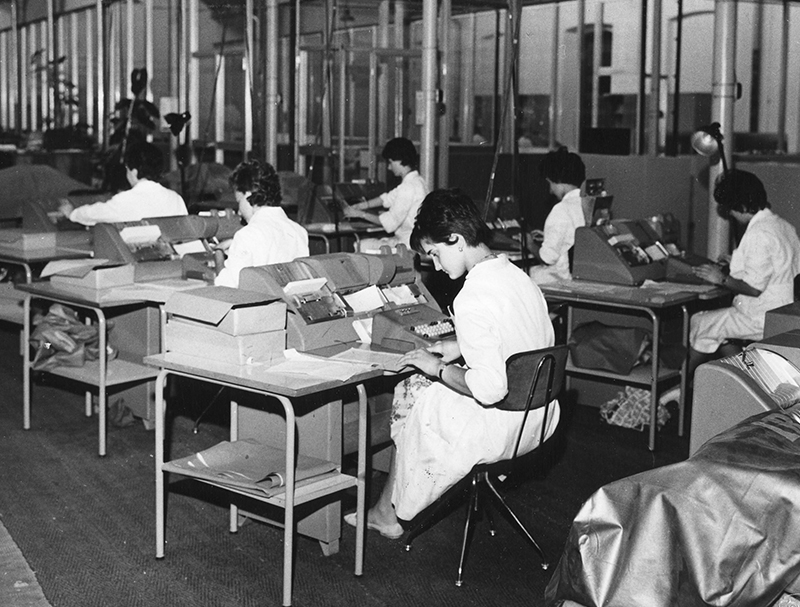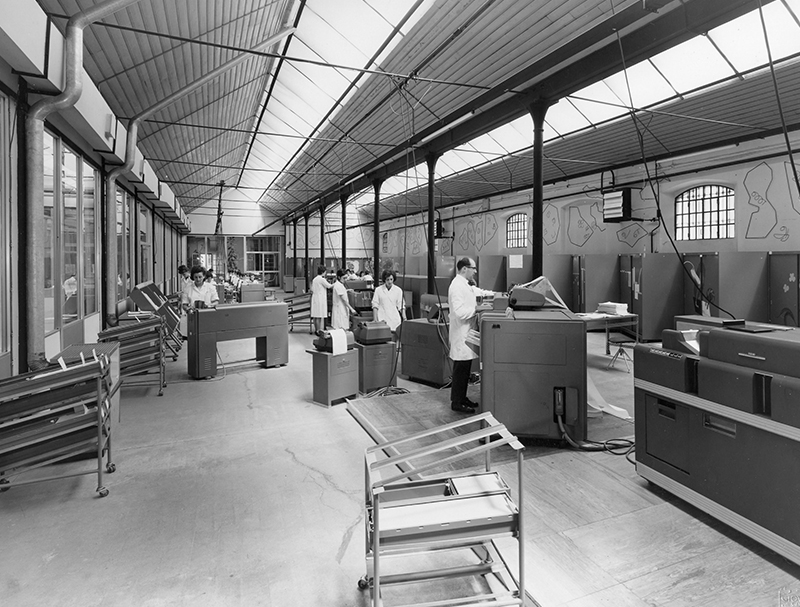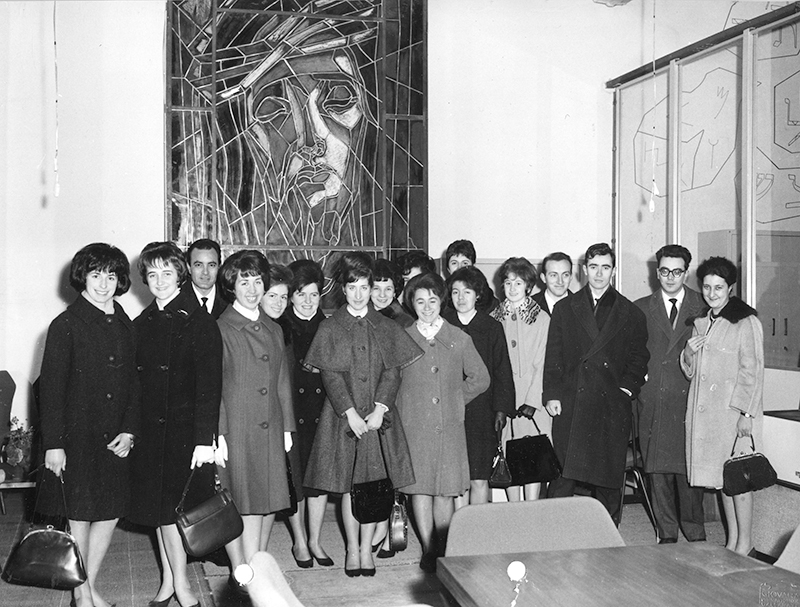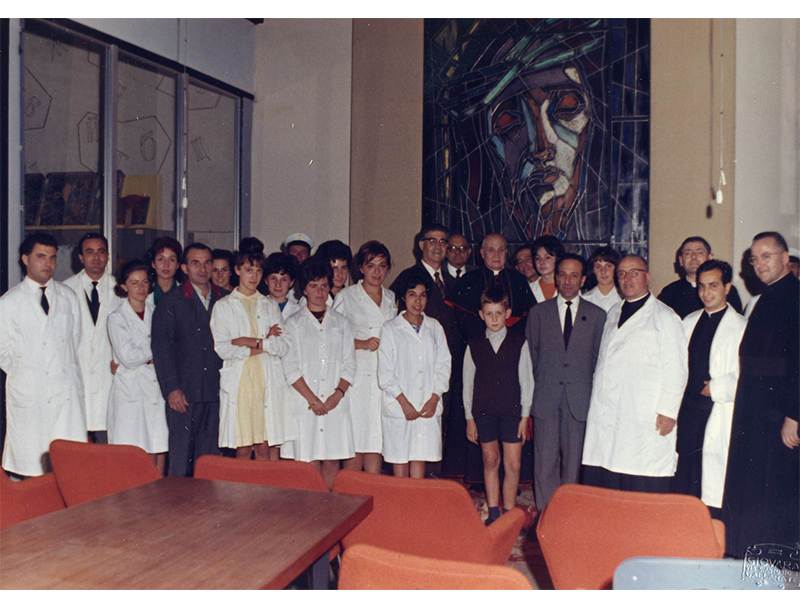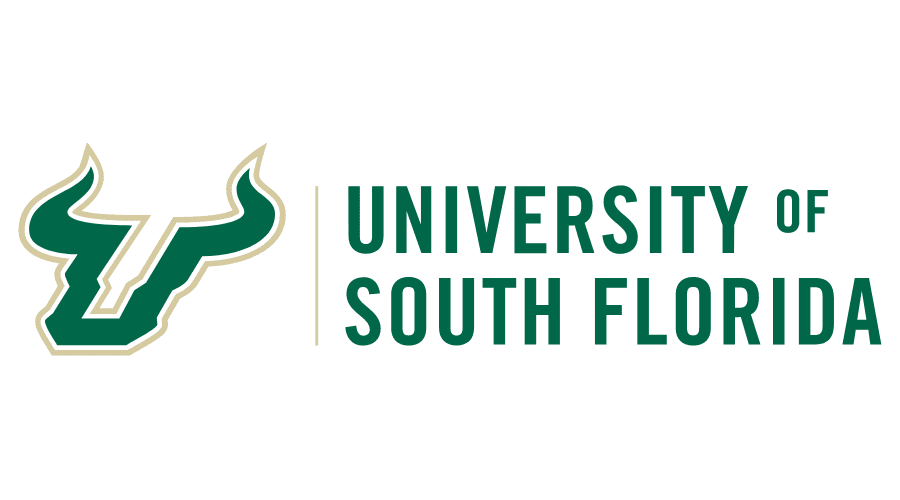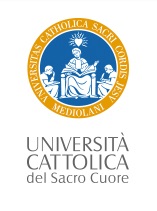Historical Context
In 1956, Jesuit scholar Roberto Busa, S.J., founded the first dedicated center for humanities computing. (That is not the same as undertaking the first act of humanities computing. Nor does this historical "first"--however significant--mark the only intellectual lineage of what we now call the digital humanities.) Busa named it CAAL, or the Centro per L'Automazione dell'Analisi Letteraria--the Center for the Automation of Literary Analysis ("Letteraria" was sometimes replaced with "Linguistica," for "Linguistic"). The idea was to use IBM punched-card machines to process language instead of numbers, to treat language as data. The anchor project for the center was the monumental Index Thomisticus, a lemmatized concordance to the works of St. Thomas Aquinas.
After several years in temporary locations, in 1961 Busa's operation moved into a former textile factory in Gallarate, outside Milan, where IBM punched-card data processing machines were installed. Teams of student operators, most of them young women, along with scholars at Father Busa's college in Gallarate, the Aloisianum, worked there for six years (1961-1967) on a lemmatized concordance to the works of St. Thomas Aquinas, the Index Thomisticus, as well as on other projects using the method of punched-card data processing. In the 1970s, the Index Thomisticus was printed in 56 bound volumes.
ReCAAL
This website is the result of a collaborative project, RECAAL ("reconstructing CAAL"). Use the tabs above to learn more about the project and our international team of collaborators and to view the various resources we've produced so far:
- A sample set of digitized materials in the Busa Archive that are relevant to the establishment of CAAL, including documents, miscellaneous artifacts, and a subset of the photographs commissioned and captioned by Father Busa himself. One goal of the project has been to help begin the process of digitizing the Busa Archive as a whole, and that process is now underway, under the direction of Senna and Passarotti at the Università Cattolica del Sacro Cuore in Milan.
- Selected examples of a growing body of oral-history interviews of CAAL's machine operators, these conducted and recorded by Nyhan and Passarotti, more transcripts of which are being published elsewhere by Nyhan and Terras.
- A reconstruction of the workflow of CAAL, by Rockwell and Sinclair, mapping out steps in the ideal process of "literary data processing," as designed at the beginning of Father Busa's work with IBM, in 1952.
- Manipulable 3D models of individual machines used in the center.
- An immersive "walkthrough," a 3D model of CAAL built in the Unity Game Engine, produced by Jones, Kaplan, Mason, and others at USF's Advanced Visualization Center. Other versions include a Virtual Reality model for the Oculus Rift.
The project as a whole aims to begin the process of reconstructing CAAL in its multiple dimensions, not in any final way or to settle every question, but to raise new questions, and to reveal what we don't know about the center and its work. Our goal is to explore the infrastructure, workflow, historical and institutional contexts for this significant site (literally and figuratively) in the history of humanities computing.
This project has been made possible in part by a major Level II Digital Humanities Advancement Grant from the National Endowment for the Humanities . (Any views, findings, conclusions, or recommendations expressed on this website do not necessarily represent those of the National Endowment for the Humanities.) Additional support has been provided by the University of South Florida and the Università Cattolica del Sacro Cuore in Milan, where the Busa Archive is located.
Further Reading
Jones, Steven E. "Reverse Engineering the First Humanities Computing Center." Digital Humanities Quarterly 12.2 (2018): http://www.digitalhumanities.org/dhq/vol/12/2/000380/000380.html.
Jones, Steven E. Roberto Busa, S.J., and the Emergence of Humanities Computing: The Priest and the Punched Cards. New York: Routledge, 2016.
Nyhan, Julianne and Marco Passarotti, ed. One Origin of Digital Humanities: Father Roberto Busa in His Own Words. Springer, 2019.
Rockwell Geoffrey, and Marco Passarotti. "The Index Thomisticus as a Big Data Project." Umanistica Digitale 5 (2019): 13-34: DOI: http://doi.org/10.6092/issn.2532-8816/8575.
Terras, Melissa and Julianne Nyhan. "Father Busa's Female Punched-Card Operators." In Debates in Digital Humanities 2016. Eds. Matthew K. Gold and Lauren Klein. Minneapolis: University of Minnesota Press: 2016: http://dhdebates.gc.cuny.edu/debates/text/57.
Tollenaere, Félicien de. Nieuwe wegen in de lexicologie. Amsterdam, Noord-Hollandsche Uitg. Mij., 1963.
Winter, Thomas Nelson. "Roberto Busa, S.J., and the Invention of the Machine-Generated Concordance." The Classical Bulletin 75.1 (1999): 3-20.
